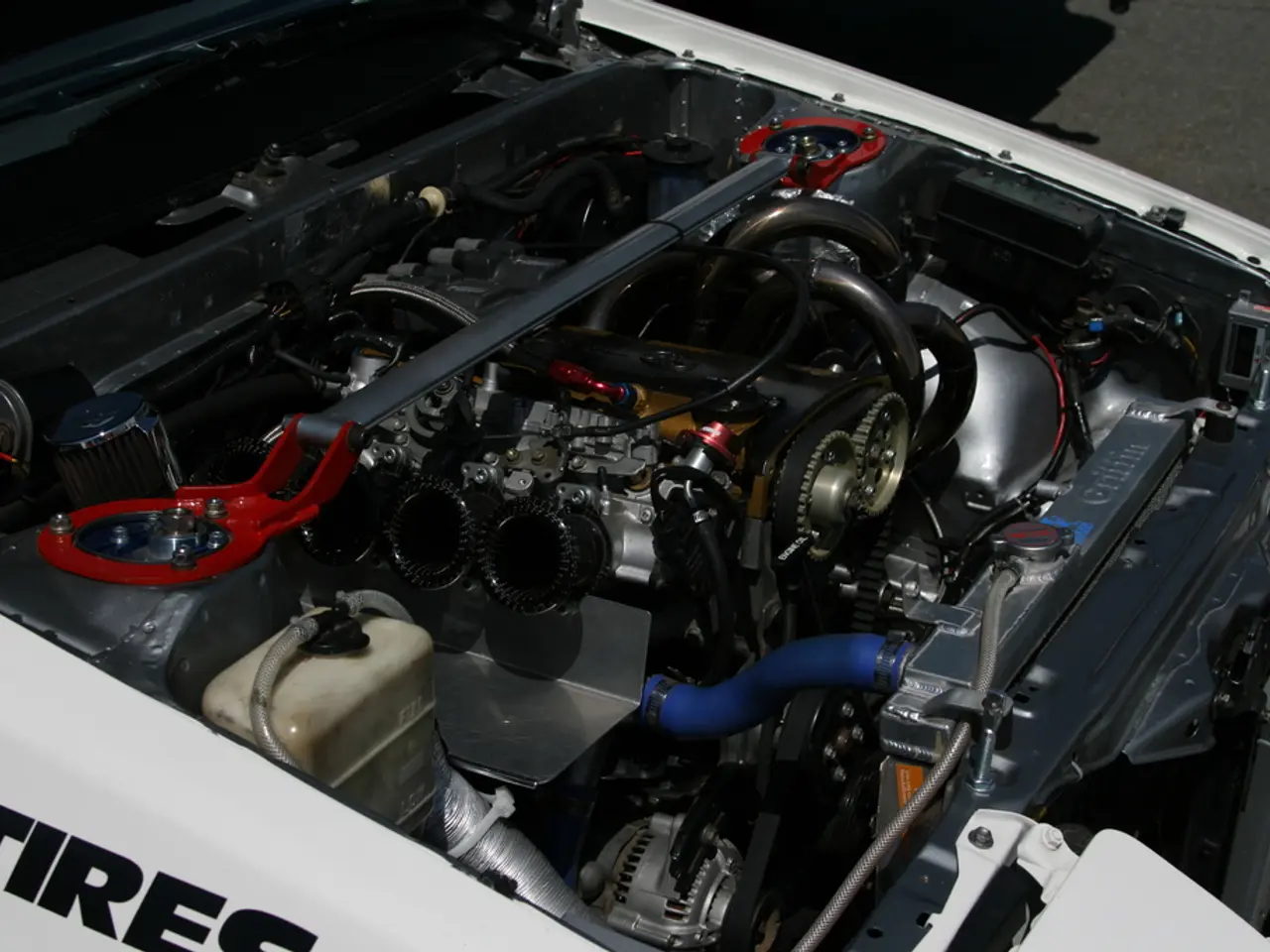Passenger car swap stations constructed by CATL surpass 400 in number
CATL Aims to Expand Battery Swap Stations for Passenger Vehicles in China
CATL, a leading battery manufacturer, is accelerating its expansion of battery swap stations for passenger vehicles in China. By the end of 2025, the company aims to reach 1,000 battery swap stations, a significant increase from the over 400 stations already built as of July 2025.
The company's ambitious expansion plans are supported by a series of strategic partnerships and technology advancements. CATL has entered into cooperation agreements with several automotive giants, including Changan Automobile, Wuling, FAW Group, SAIC Motor, and Sinopec.
One of CATL's key collaborations is with Nio, with whom they announced a partnership in March to jointly build the world's largest and most advanced battery swap service network for passenger vehicles. As of now, Nio operates 3,425 battery swap stations in China, with 1,000 located along highways.
CATL's battery swap stations use standardized "Choco-SEB" swappable battery packs, compatible with over 20 EV models from partners including Nio, Didi, and Sinopec. This enhances interoperability, allowing for a seamless battery swap experience across various vehicles.
In addition to passenger vehicles, CATL is also focusing on battery swap technology for heavy-duty trucks. As of now, they have around 100 battery swap stations for heavy-duty trucks, with plans to expand to around 300 by year-end.
CATL's financial performance has been robust, with RMB 178.9 billion in revenue for the first half of the year, and RMB 94.2 billion in the second quarter. The company reported a net income of RMB 30.5 billion in the first half of the year, and RMB 16.6 billion in the second quarter.
Looking beyond China, CATL plans to introduce its battery swap and recycling technologies to Europe, positioning itself for global expansion in the rapidly growing electric vehicle market.
Sources: [1] CATL aims to reach 1,000 battery swap stations for passenger vehicles by the end of this year. (2025). Retrieved from https://www.catl.com/en/news/2025/01/catl-aims-to-reach-1000-battery-swap-stations-for-passenger-vehicles-by-the-end-of-this-year/
[2] CATL's net income in the first half of the year was RMB 30.5 billion. (2025). Retrieved from https://www.catl.com/en/news/2025/07/catl-reports-net-income-of-rmb-16-6-billion-in-the-second-quarter/
[3] CATL's revenue in the second quarter was RMB 94.2 billion. (2025). Retrieved from https://www.catl.com/en/news/2025/07/catl-reports-net-income-of-rmb-16-6-billion-in-the-second-quarter/
[4] In March, CATL announced a partnership with Nio to jointly build the world's largest and most advanced battery swap service network for passenger vehicles. (2025). Retrieved from https://www.catl.com/en/news/2025/03/catl-announces-partnership-with-nio-to-jointly-build-the-worlds-largest-and-most-advanced-battery-swap-service-network-for-passenger-vehicles/
[5] As of the end of July, CATL has constructed over 400 battery swap stations for passenger vehicles. (2025). Retrieved from https://www.catl.com/en/news/2025/07/catl-reports-net-income-of-rmb-16-6-billion-in-the-second-quarter/
- CATL, a key player in the automotive and technology industries, aims to expand its battery swap stations for electric vehicles (EV) in China to 1,000 by the end of 2025.
- The instrumentality of this expansion is a series of partnerships with several automotive giants in China, including Changan Automobile, Wuling, FAW Group, SAIC Motor, and Sinopec.
- One notable partnership is with Nio, with whom CATL announced a collaboration in March to jointly build the world's largest and most advanced battery swap service network for EVs.
- CATL's battery swap stations use standardized "Choco-SEB" swappable battery packs, compatible with over 20 EV models from partners like Nio, Didi, and Sinopec, enhancing interoperability for a seamless battery swap experience.
- Additionally, CATL is focusing on battery swap technology for heavy-duty trucks, with plans to increase the number of battery swap stations from the current 100 to around 300 by year-end.
- With a robust financial performance, including RMB 178.9 billion in revenue for the first half of 2025 and RMB 94.2 billion in the second quarter, CATL is planning to introduce its battery swap and recycling technologies to Europe, preparing for global expansion in the rapidly growing EV market.




